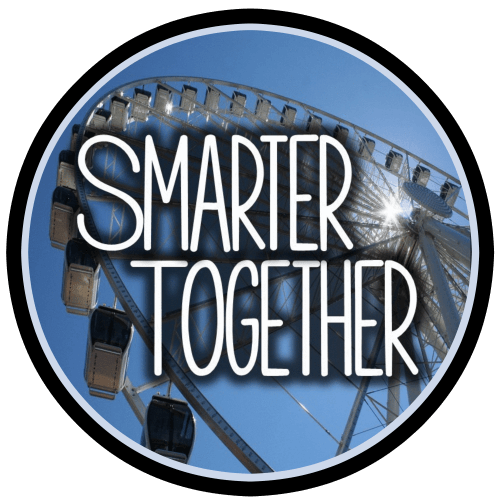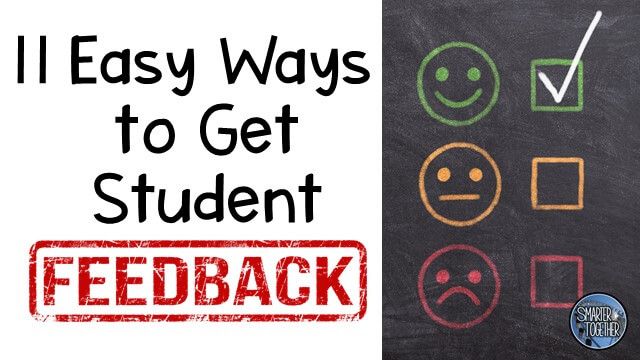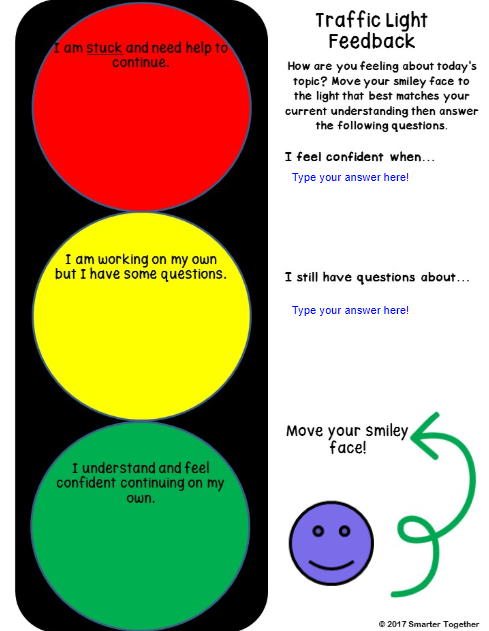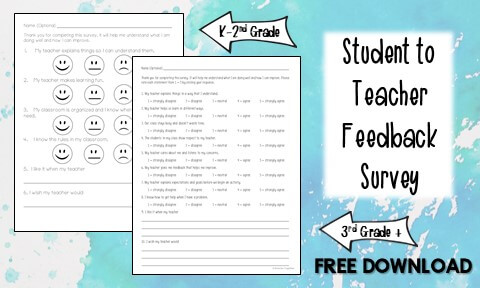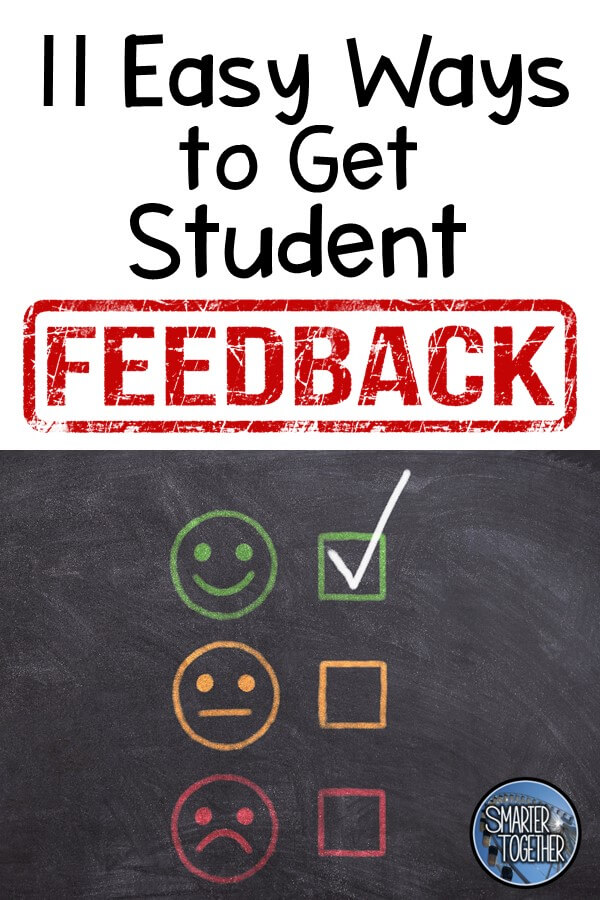I am constantly asking my students to provide feedback about my teaching. Sometimes the feedback is easy to hear and I can quickly adapt instruction. Sometimes the feedback hurts my pride a little and I need to take a deep breath. Whether easy or difficult to hear, feedback is always important and drives my instruction. Feedback helps me refine my practice and meet the needs of all of the learners in my class.
I like to implement many different ways to get feedback from my students. Feedback is a part of our daily routine from the first day of school.
11 Easy Ways to Get Feedback From Students
Thumbs

This method is fairly common but still deserves a shout out! Throughout lessons, I will periodically stop and ask students to give me a thumbs up, down or sideways to show their understanding of the concept we are exploring. I ask them to do it low and in front of them so that I am the only one that can see their response. I find that if they put it high in the air, students who are struggling will put a thumbs up because they don’t want others to know they are struggling. Use this method as a quick and easy way to check for understanding.
1, 2, 3, 4, 5
As a quick exit ticket/temperature check, I will have students hold up 1, 2, 3, 4, or 5 fingers as they walk out of the door. 1 means “I think you are speaking a different language.” 3 means “I am on my way to understanding but I would like some support.” 5 means “Mrs. Najar, please take a break. I can teach the class about this topic.” I will often use this method of feedback when discussing a long term assignment or if we ran out of time for a more formal method of feedback.
Weird Faces
I encourage my students to make “weird” faces at me as I am teaching. When they scrunch up their face, I know that what I have just said is confusing and I need to elaborate or explain it in a different way. If students get wide-eyed and wave their hands then I know to slow the pace. If they feel like they know exactly what I am talking about and would like me to move on then they nod their heads and smile. We practice all of the faces and I tell them exactly how I use the information they provide. Many of my students love the fact that they can help me pace my lessons (and make faces at me). Rather than sitting there passively listening, they have control.
Traffic Light
Create a traffic light with a red, yellow, and green circles. Have students move their name or number to represent how they are feeling about a particular topic. Put the traffic light on the whiteboard and have students move magnets with their classroom number to the corresponding circles (Green = I understand the concept. Yellow = I am a little confused but moving in the right direction. Red = I am stuck. I need help to move on.).
Digital Feedback
I love anything paperless! Feedback is no exception. I have created digital feedback forms using Google Slides. I can “pass out” the form to students with the click of a button. The digital forms include traffic lights, self-reflections, group reflections, and a digital parking lots for question (Yes…the same ones they love to use at our PD sessions!).
Cups on a Desk
Cups on a desk allow students to give immediate feedback. Simply give students 3 cups (red, yellow, and green) to stack on their desk. If they feel confident their cup stays on green. If they need additional clarification, they switch it to yellow. Red means they are very confused and need assistance. Cups work great during instruction and work time to get a quick feel for student understanding. Don’t have cups? Laminate colored paper and put it on a ring for students to flip.
Exit Tickets
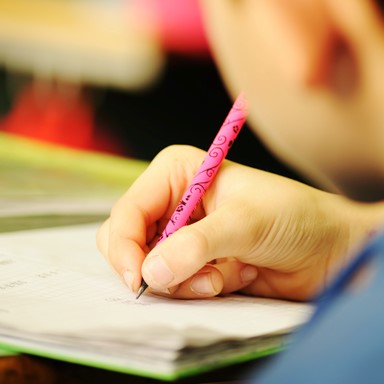
Another oldie but goodie! Exit tickets are a great way to analyze students’ understanding of a particular concept. I use the information from the exit tickets to plan for the following lessons and to group students who may need additional support. Exit tickets can be as easy as passing out a sticky note and asking students to respond to a question.
Anonymous Feedback/Comment Box
Put a box out for students to leave notes about just about anything. You can ask for specific feedback or just leave it out to find out important information students might not feel comfortable sharing with you.
Morning Meeting
Add student feedback as part of your morning meeting. You can call it Feedback Friday…What went well this week? What would you change?
Reflect on Goals/Learning Objectives
At the beginning of an instructional block, I discuss the learning targets with students. We regularly check during and after instruction to see if we are making progress toward/have met out objectives. This involves students in the process and I receive feedback about whether they feel they have met the target. I also use goal setting templates to help students plan and reflect on longer term goals.
Student Survey
Give students a survey about your teaching practices and classroom community. Don’t wait until the end of the year! I like to give surveys at the end of each quarter. This way I have time to implement the student suggestions. Warning – As you know, students can be brutally honest. Some of the feedback is hard to hear. Remember it is not personal and is used to help you grow.
A free student survey download is available in the Free Digital Library. The free download includes two versions of the survey for younger and older students. To access the Free Digital Library with exclusive freebies, sign up to receive my newsletter. The access code will be immediately sent to your email.
Student feedback has revolutionized my teaching. My students are more engaged and I know how to reach them. I would love to hear how you get feedback from your students! Please leave me a comment below.
